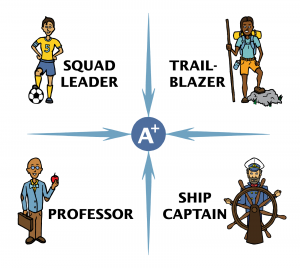As a child, you were taught to be nice, right? As adults, we want to be nice! It makes life more stress free and fun. Being nice invites cooperation, conscious agreements and good working relationships. However, being nice also presses us to reflect on the words we speak and how we choose to say them. And since no two people are exactly alike, “nice” is viewed very differently. Is someone nice, not so nice, or just different?
Communication
Connecting with words is literally a lifeline these days—whether written, virtual, or in person. Words and actions that model leadership and create a safe, secure environment, are more important than ever, due to the influx of change and important decisions being made in your business.
Your thought-out words influence and impact! They have the power to bring calm reassurance and clarity to confusion. They reaffirm the core values and direction of your company. Such words invite team members to respond and contribute, uniting—they prevent teams from feeling isolated and fearful.
Company leaders who have confrontative, angry outbursts—or the opposite which is just as detrimental—leaders who avoid and are silent, have to raise their personal awareness and change to get the best results. Either of these default, self-protective and reactive behaviors create a lack of trust and break connection, hindering the ability to be productive and achieve business goals.
Not So Nice
I don’t want to be too hard on you, because we know the stress and uncertainty of the current times makes you (and me) sometimes allow words to slip off the tongue too quickly, and they can be not so nice—or you might be the opposite, a person whose silence and avoidance speaks louder than words. We’ve all been there in one way or another, depending on how we’re wired! We just don’t want to stay there!
Awareness
Building awareness of your team’s individual strengths and weaknesses, helps to tamp down emotional reactivity that we tend to aim at one another.

Humans are born with innate characteristics, and those place each of us in a particular quadrant, as well as towards the center or towards the outer edge of one of the two polarities in which my team and I coach clients. Awareness of these furthers understanding of how to communicate, reveals natural tendencies and actions, and helps each of us recognize our self-protective reactions when on the spot or under stress: 1) You have a human default to how you respond to situations, and 2) You have a human default in how you respond to people.
These natural tendencies, when you are functioning in your secure self, strongly contribute to you being an ‘A’ player with a valuable set of skills. We call them your superpowers—your innate strengths and genius. Do you know yours?
TAKE OUR SELF-LEADERSHIP QUIZ
These descriptions reveal some about you, as well as others on your team. As you read these, who comes to mind within your company?
The Professor is the super expert of the team…
The Trailblazer is a good example of a natural entrepreneur and one not afraid of taking risks…
The Squad Leader is the team’s alliance builder…
The Ship Captain charters the course and draws the maps…
Clearly, effective communication has to consider all four of these quadrant types; each one acts and reacts very differently. Take a quick glimpse of characteristics and also the hidden sabotage characteristics. Greater knowledge about “the people part,” is imperative to your business success. Superpowers of A players can become kryptonite under stress and pressure. For sure, these powers can turn on the best of us, and we come off as “not so nice.” More than once, I’ve had to admit I didn’t know everything, and embrace the team concept that includes different people with different strengths and weaknesses.
Humbleness
I’ve learned (sometimes the hard way) to allow my trusted people, my team, to show me the writing on the wall—yep, train up and change me, or rather—me finally seeing blindspots that needed changing! It is humbling. It’s also inevitable; everyone has a hangnail or two, as they do the work that it takes to realize personal and business growth. Yet, to make this point is one of the ongoing challenges I have when I am working with CEOs/entrepreneurs—convincing them, change within the company starts with them—with you!
Today, this brief glimpse into the four quadrants of personality, is the perfect time to learn more by clicking on this link to take the “Quiz.” See where you fall, and discover more about communicating with those on your team that are unlike you. But, first of all, know you!
Understanding
Recognizing and appreciating each other’s strengths and genius, along with natural human self-protections, is key to understanding what may come across, at times, as “not so nice,” when in reality, it’s an inborn default of self-protection.
Lastly, you might be thinking, is there a downside, or a risk, to being too nice in business?
I wish there wasn’t a risk of being too nice, but due to workplace behaviors most of us have experienced at one time or another, I have to acknowledge that some (certainly not all) human responses to “nice” bring out the “not so nice” in others. That may be especially true now, since everyone has different life responsibilities and stressors—and some may emotionally react in “fight or flight.” We are in the same storm, but different boat, you know what I mean?
Increasing awareness and demonstrating compassion towards others helps. Listen. Allow them to share what is causing them to struggle. At the same time, create time to hear what is working for them. Being cared about and heard helps most anyone.
After all, in uncomfortable, sticky discussions, most of us prefer to communicate in a more personal way and communicate nicely, but in some situations, it’s tricky to not be too nice, which can allow human nature and reactivity in others to run wild and take advantage. That behavior helps no one.
Compassionate Leadership
I hope my short explanation makes sense, because “nice” in excess dilutes or ignores the point of the business discussion altogether—this is especially true for nice folks who struggle to speak head-on with someone about the hard issues.
Even while being nice, a leader needs to always steer back to the conversation's intent and the issue. Keep in mind, frankness is necessary, because this is business and issues that need a conversation and solution can't be brushed aside or ignored.
When communicating from a place of compassionate leadership and authority, it’s exciting to formulate skills to convey what needs to be said, the needed business outcomes, while remaining in a strong and comfortable place of nice!
Contact us anytime, when you feel the need for further information and guidance.
This is leadership!
Annie










